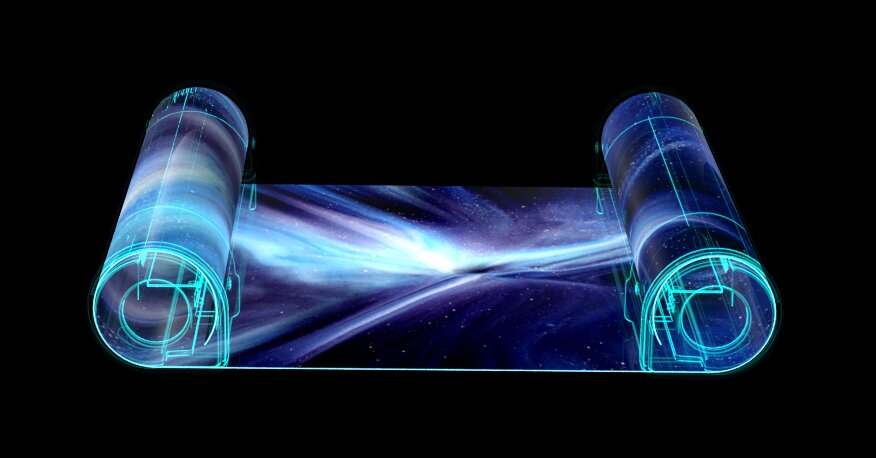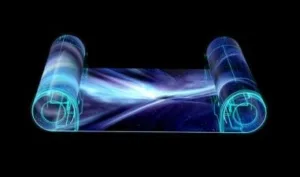Perhaps the most significant display-related announcement at this year’s imaginary CES concerned TCL Electronics’ development of a miniLED display module with zero optical distance between the miniLED and LCD layers. But I’m not going to talk about that because my colleague Chris Chinnock will soon be covering it in detail.

If anybody has the resources to make an online exhibition work it’s CES’s parent company the Consumer Technology Association. Unfortunately, despite its signature hyper-produced videos — shown this year on your monitor instead of on huge screens in thousand-person ballrooms — CES 2021 was as flat as week-old champagne. In the flesh, you can often dig out the technical content behind the marketing fluff. In virtual-land, the fluff rules.
With only half the exhibitors of the most recent real CES in 2020, I found myself wandering in odd cyberspatial corners. I was charmed by Puppyoo — the Beijing Puppy Vacuum Cleaner Group (Fig. 1). But after I explored the extensive line of Puppy vacuum cleaners, which includes a UV mattress vacuum, I did find some interesting display introductions.
 Fig. 1. Puppyoo, the logo for the Beijing Puppy Vacuum Cleaner Group. (Graphic: BPVCG)
Fig. 1. Puppyoo, the logo for the Beijing Puppy Vacuum Cleaner Group. (Graphic: BPVCG)
In addition to its OD Zero TV, TCL introduced a 5G smartphone for less than $300 and a notebook PC on the company’s NXT Vision 20 platform with a black and white reading mode and a reflective color mode. Additional information was not readily available, but a $300 5G phone must embody some interesting compromises — sorry, I mean “trade-offs.”
 Fig. 2. TCL claims its 17-inch printed OLED scrolling display will have a manufacturing cost 20% less than a conventional flexible OLED made with vacuum thermal evaporation. (Photo/graphic: TCL)
Fig. 2. TCL claims its 17-inch printed OLED scrolling display will have a manufacturing cost 20% less than a conventional flexible OLED made with vacuum thermal evaporation. (Photo/graphic: TCL)
TCL CSOT launched a 17-inch flexible printed OLED scrolling display and a 6.7-inch OLED rollable display at CES 2021. The 17-inch is 0.18mm thick, and its RGB structure is fabricated with a “high-precision ink jet printing technology. As a result, the cost is 20% lower than traditional display technologies and is more applicable for large-size displays and mass production,” said a TCL release.
The OLED rollable display extends from 6.7-inches to 7.8-inches in TCL’s prototype smartphone, which is less than 10mm thick. The curling and sliding radius of the flexible screen can be as small as 3mm. Touching a button on the phone causes the screen, which is initially curled and hidden inside the case, to be pulled out. The sliding life of the device is up to 100,000 cycles, says TCL.
Innolux Looks to Automotive
Innolux claimed the industry’s first 11.6-inch automotive display with miniLED backlight. The display, says Innolux, has high contrast ratio, high color saturation, high resolution, and low power consumption, which are reasonable claims for miniLED display. “The next milestone will be a sophisticated microLED automotive display solution.”
LG Display announced an improved OLED display. The company’s new 77-inch OLED display incorporates “newly developed and highly efficient materials as well as the addition of a layer to the display, thereby improving its efficiency by around 20%.” Especially now that it will face direct competition from miniLED-backlit LCDs, OLED needs more luminance.
LGD said that 42- and 83-inch OLEDs would be added to the existing line-up of 88-inch (8K), 77-inch, 65-inch, 55-inch, and 48-inch.
LG Electronics showed a video of a transparent rollable TV, much like the opaque rollable TVs it has shown in the past except that this one’s transparent. One video showed a black layer rising with the TV screen to provide blacks that are black instead of transparent.
Sony Gets Cognitive
Sony announced that its Bravia XR TV sets would have their video processing done by a new Cognitive Processor XR. “The…televisions use a completely new processing method designed to replicate the ways humans see and hear. When we see objects, we unconsciously focus on certain points. Cognitive Processor XR…divides the screen into numerous zones and detects where the “focal point” is in the picture.
While conventional Artificial Intelligence (AI) can only detect and analyze picture elements like color, contrast and detail individually, the new processor can cross-analyze an array of elements at once, just as our brains do. By doing so, each element is adjusted to its best final outcome, in conjunction with each other, so everything is synchronized and lifelike – something that conventional AI cannot achieve.” Now, Sony is justifiably known for its excellent electronics; but would Samsung, LG, and TCL agree that their AI processors deliver pictures that are not “lifelike?” It would be interesting to make a side-by-side comparison. Oh, that’s what I’d do at a real CES.
Sony’s processor also “analyze[s] sound position in the signal so the sound matches precisely with what’s on the screen. In addition, it upconverts any sound to 3D surround sound.”
At the Pepcom virtual show-within-a-show for media only, Viewsonic showed a 32-inch 8K monitor (VP3286-8K) with built-in calibrator for high-end photo work. And Ampere intrduced a “Hydropower Shower Speaker,” a shower head incorporating a speaker, amplifier, and a turbine that uses the shower water to power the device. I told you this imaginary CES tended to lead me off into odd corners. (KW)
Ken Werner is Principal of Nutmeg Consultants, specializing in the display industry, manufacturing, technology, and applications, including mobile devices, automotive, and television. He consults for attorneys, investment analysts, and companies re-positioning themselves within the display industry or using displays in their products. He is the 2017 recipient of the Society for Information Display’s Lewis and Beatrice Winner Award. You can reach him at [email protected] or www.nutmegconsultants.com.

